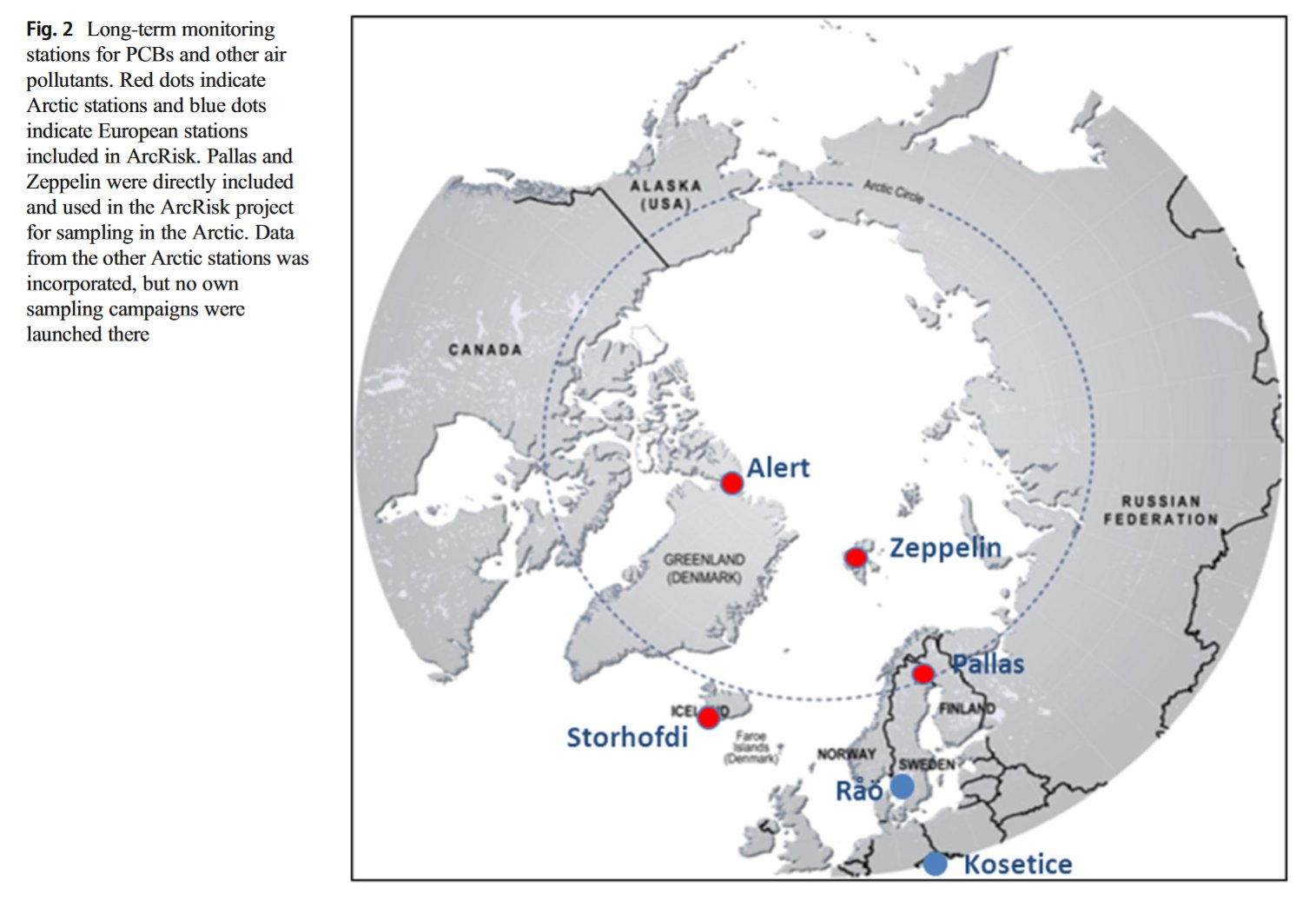Polychlorinated biphenyls (PCBs) as sentinels for the elucidation of Arctic environmental change processes: a comprehensive review combined with ArcRisk project results
New publication by Pernilla Carlsson, Knut Breivik, Eva Brorstrom-Lunden, Jesper Christensen, Joan O. Grimalt, Crispin Halsall, Roland Kallenborn, Khaled Abass, Gerhard Lammel, John Munthe, Matthew MacLeod, Jon Oyvind Odland, Janet Pawlak, Arja Rautio, Lars-Otto Reiersen, Martin Schlabach, Irene Stemmler, Simon Wilson, and Henry Wohrnschimmel

Abstract:
Polychlorinated biphenyls (PCBs) can be used as chemical sentinels for the assessment of anthropogenic influences on Arctic environmental change. We present an overview of studies on PCBs in the Arctic and combine these with the findings from ArcRisk—a major European Union-funded project aimed at examining the effects of climate change on the transport of contaminants to and their behaviour of in the Arctic—to provide a case study on the behaviour and impact of PCBs over time in the Arctic. PCBs in the Arctic have shown declining trends in the environment over the last few decades. Atmospheric long-range transport from secondary and primary sources is the major input of PCBs to the Arctic region. Modelling of the atmospheric PCB composition and behaviour showed some increases in environmental concentrations in a warmer Arctic, but the general decline in PCB levels is still the most prominent feature. ‘Within-Arctic’ processing of PCBs will be affected by climate change-related processes such as changing wet deposition. These in turn will influence biological exposure and uptake of PCBs. The pan-Arctic rivers draining large Arctic/sub-Arctic catchments provide a significant source of PCBs to the Arctic Ocean, although changes in hydrology/sediment transport combined with a changing marine environment remain areas of uncertainty with regard to PCB fate. Indirect effects of climate change on human exposure, such as a changing diet will influence and possibly reduce PCB exposure for indigenous peoples. Body burdens of PCBs have declined since the 1980s and are predicted to decline further.
